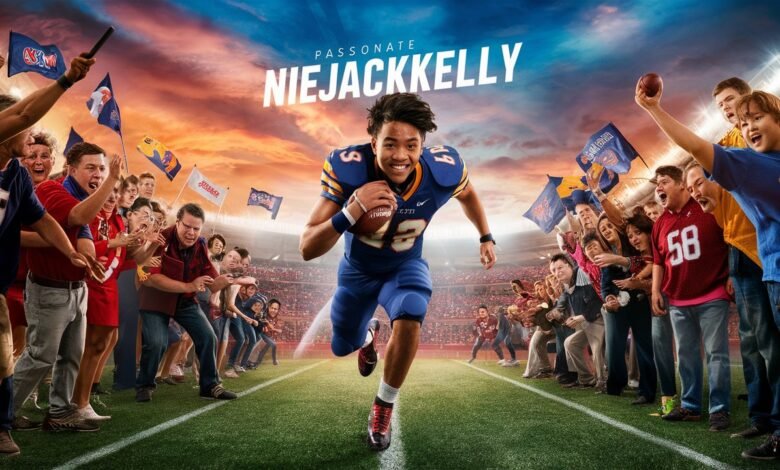Where Did My Niejackkelly Go Football? A Journey Through Football’s Changing Landscape

Football is more than just a game; it’s a cultural phenomenon, a source of entertainment, and an outlet for passion worldwide. Over time, however, football has undergone numerous transformations, evolving in ways that sometimes leave fans wondering: Where did my Niejackkelly go football? This phrase, though intriguing, refers to the many changes that fans experience as their beloved sport shifts in response to societal changes, technological advances, and even economic pressures. The game itself remains the same at its core, but the landscape around it is constantly in flux. In this article, we will explore the reasons behind these changes, the impact on players and fans, and how football continues to adapt to the modern world. Along the way, we’ll discuss the history of football, current trends, and answer some of the most frequently asked questions related to the game’s evolution.
The Changing Face of Football: A Historical Perspective
Football has seen remarkable transformations over the years. From its early origins as a rudimentary game played on the streets to the highly organized and global sport we know today, the evolution of football has been a story of constant adaptation. The shift began with the formalization of the rules in the mid-19th century and the creation of leagues that allowed teams to compete at a higher level. As the sport became more structured, the focus moved toward improving player skills, building international connections, and enhancing the viewing experience for fans.
The 20th century saw football become more commercialized, with broadcasting deals bringing the game into the living rooms of millions around the globe. New technology, such as video assistant referees (VAR), further changed how games were played and analyzed. However, it’s the 21st century that has witnessed the most rapid transformation, with the growth of online platforms, social media, and even virtual reality, changing how fans engage with the sport.
The Rise of Technology in Football
Technology has had a profound impact on football, both on and off the field. Advances in equipment, data analytics, and broadcasting have all contributed to a richer and more dynamic football experience. For instance, the introduction of high-tech football boots designed for better grip, speed, and comfort has enhanced player performance significantly. Off the field, clubs and players now rely on vast amounts of data to analyze player performance, optimize training sessions, and even scout potential talent.
On the matchday, fans benefit from innovations like instant replays, goal-line technology, and the aforementioned VAR, which help ensure that decisions are more accurate. While some purists may lament the “modernization” of the game, it’s clear that technology has played a role in making football more exciting and precise. This has undoubtedly led to questions among traditionalists: where did the raw, unpolished form of the sport go?
Economic Factors and Their Influence on the Game
As football became more commercialized, the influence of money began to shape the sport in ways that were previously unimaginable. The influx of TV deals, sponsorships, and even social media endorsements turned football into a global business empire. This shift has had both positive and negative effects on the game. On the one hand, the increased financial resources have allowed clubs to invest in world-class talent, cutting-edge facilities, and exceptional coaching staff. On the other hand, the influx of wealth has led to growing concerns about inequality among clubs, as smaller teams struggle to compete with the financial giants of the sport.
The financial side of football has also impacted the transfer market. Transfer fees have skyrocketed, and some fans wonder if the sport has become too commercial and detached from its grassroots origins. Players who once played for passion and pride now sometimes appear to be driven more by financial gain, leading to a sense of disconnection from the true spirit of football. This, too, leads us to ask: “Where did my Niejackkelly go football?”
The Evolution of Fan Culture in the Digital Age
In the past, football fandom was largely an in-person experience. Fans would gather in stadiums to cheer for their teams, and community rivalries were built around shared experiences and regional pride. Today, fan culture has shifted dramatically, driven by digital advancements. Social media platforms like Twitter, Instagram, and TikTok have created virtual communities where fans interact with players, share opinions, and engage with other football supporters from across the globe.
This change has made football more inclusive in some ways, as fans from all over the world can now follow their teams and players with greater ease. However, it has also led to challenges. The constant online scrutiny of players, especially through viral moments and memes, can lead to mental health issues for those involved in the sport. Additionally, the rise of online streaming services has altered the way people consume the sport, moving away from traditional TV broadcasting.
This digital shift has undoubtedly changed the way we perceive football. Fans may no longer need to travel thousands of miles to see their favorite team play in person, but the essence of football fandom has transformed in a way that makes some long for the days when the experience felt more authentic.
What’s Next for Football? Predictions and Challenges
Looking ahead, it’s clear that football will continue to evolve. The integration of AI, augmented reality, and possibly even more advanced VR experiences could create immersive ways for fans to experience matches from their own homes. We may also see changes in the structure of competitions as the global nature of football pushes for new ways to organize leagues and tournaments.
However, challenges remain. The commercialization of football risks alienating long-time fans who feel disconnected from the players and teams they once adored. Rising ticket prices, for example, make it harder for average fans to attend matches in person, while the increasing number of digital subscriptions required to access matches can further limit accessibility.
Despite these challenges, one thing is certain: the essence of football will remain intact. The passion, the excitement, and the joy of watching a thrilling match will always be at the heart of the sport, no matter how much the landscape changes.
Conclusion: Embracing Change While Honoring Tradition
As we reflect on the journey football has taken over the years, it’s clear that the game has undergone dramatic transformations. From the introduction of new technologies to the economic forces shaping the sport, football has evolved in ways that would have been unimaginable just a few decades ago. Yet, despite all the changes, one thing remains constant: the love for the game. Football still captures the hearts of millions, whether through the thrill of a last-minute goal, the camaraderie of fellow fans, or the joy of watching players showcase their talents on the field.
So, while we may find ourselves asking, “Where did my Niejackkelly go football?” the truth is that the game is still very much alive, albeit in a different form. The challenge for fans, players, and administrators is to embrace these changes while remaining true to the core values that have made football the world’s most beloved sport.
Frequently Asked Questions (FAQs)
-
What is meant by “Niejackkelly” in the context of football?
- “Niejackkelly” refers to a sense of nostalgia or longing for the simpler, more traditional aspects of football that may seem lost amid the modern commercialization and technological advancements in the sport.
-
How has technology changed football?
- Technology has revolutionized the sport in many ways, from performance analytics and VAR to improved broadcasting methods that allow fans to experience matches from any location.
-
Why are football transfer fees so high?
- Transfer fees have risen due to the increasing commercialization of the sport. With more money flowing into football through sponsorships, broadcasting deals, and merchandise sales, clubs are willing to pay top dollar for the best talent.
-
Has fan culture been negatively impacted by digital platforms?
- While digital platforms have allowed fans to connect globally and access football content easily, they’ve also led to issues like online harassment and pressure on players. Fans also sometimes miss the traditional, in-person matchday experience.
-
What is the future of football?
- The future of football is likely to include further technological innovations such as AI and virtual reality, along with potential structural changes to the game to accommodate its growing global audience. However, maintaining the sport’s core values will be key to keeping it accessible and enjoyable for future generations.



